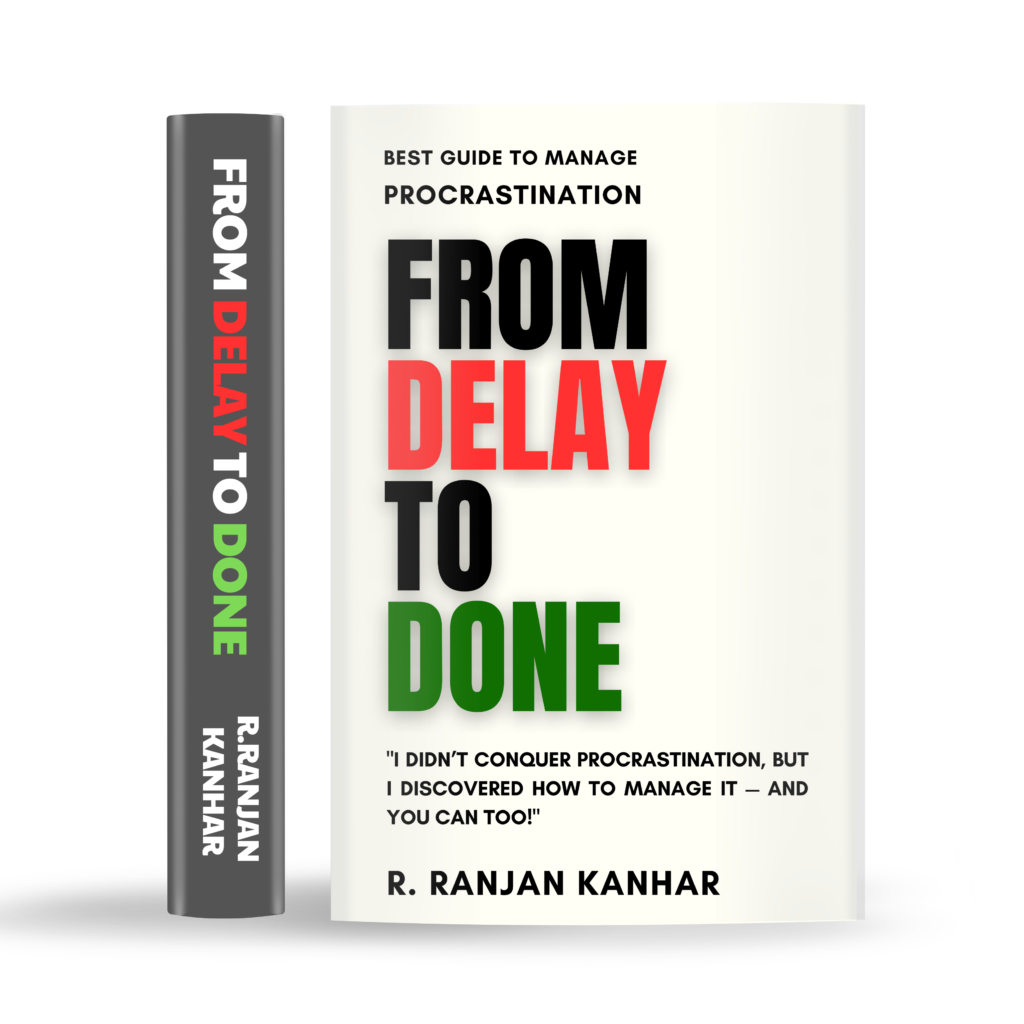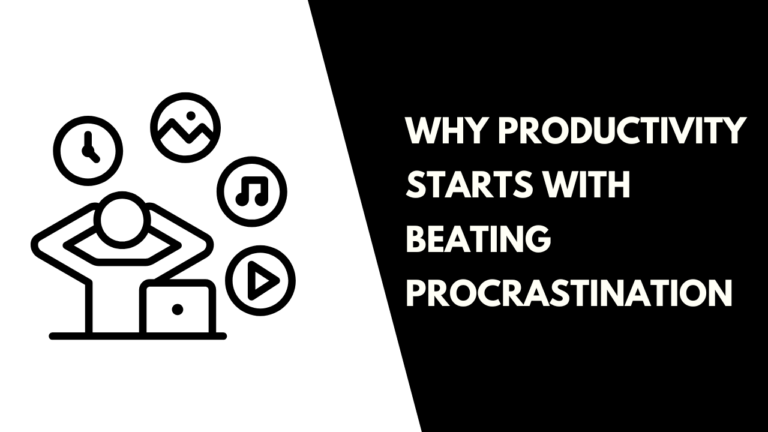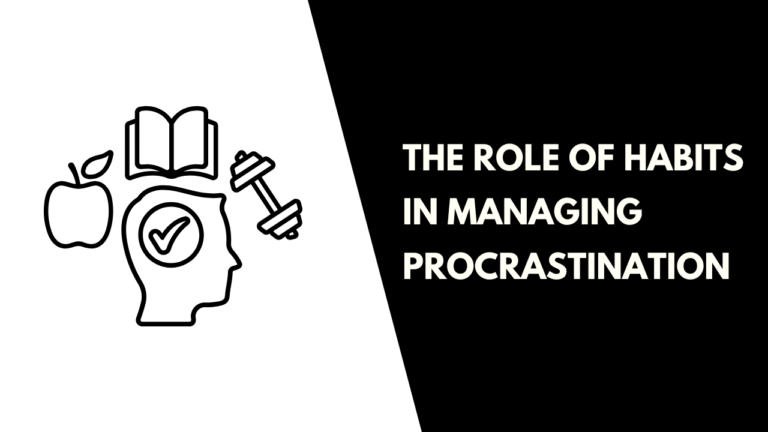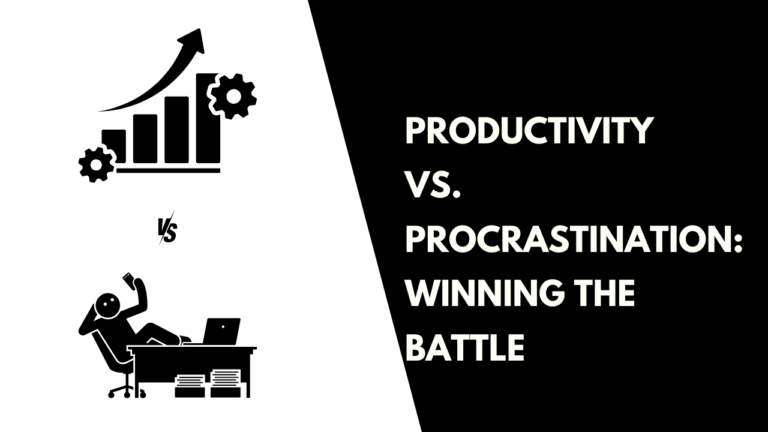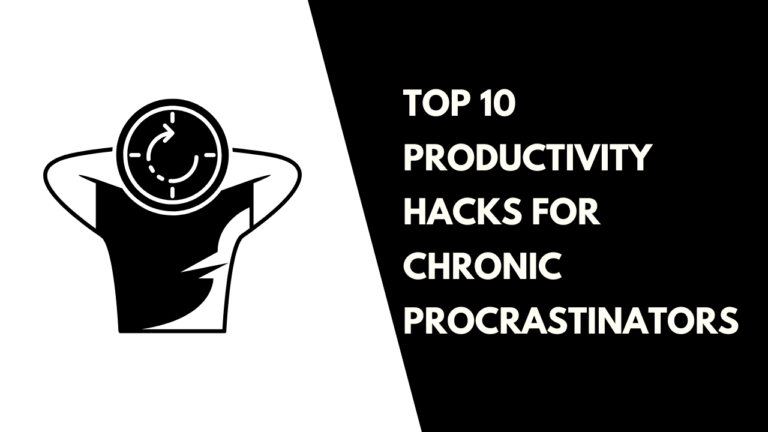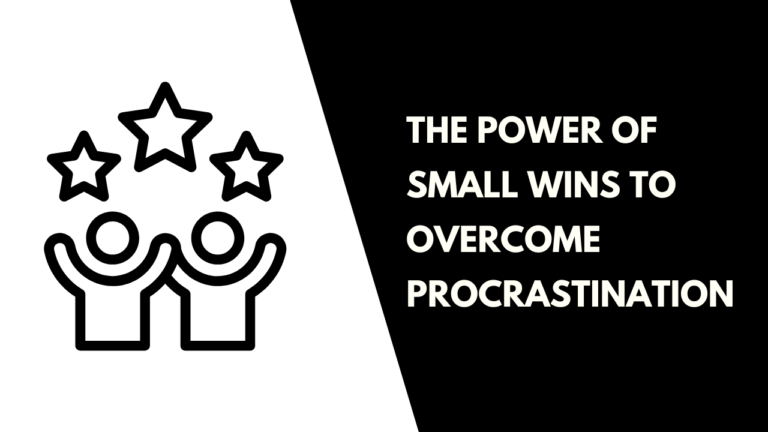Why Taking Breaks Can Boost Productivity and Reduce Procrastination
Why Taking Breaks Can Boost Productivity and Reduce Procrastination
Introduction
Have you ever found yourself staring at your screen for hours, struggling to focus, yet unable to make real progress? You keep pushing yourself, thinking that working longer will get more done. But in reality, you end up feeling drained, distracted, and unmotivated. If this sounds familiar, you’re not alone.
Table of Contents
ToggleOne of the most counterintuitive ways to get more done is by taking breaks. Yes, stepping away from work at the right moments can actually help you achieve more in less time. In fact, science proves that taking breaks can boost productivity and reduce procrastination.
In this article, we’ll explore why breaks are essential, how they help fight procrastination, and how you can structure them for maximum efficiency.
The Science Behind Why Taking Breaks Can Boost Productivity
Our brains are not designed to focus for long hours without rest. According to research, the human brain works best in cycles of intense focus followed by rest. When you work for too long without a break, your ability to concentrate diminishes, leading to mental fatigue, poor decision-making, and increased procrastination.
A study by the University of Illinois found that prolonged focus on a single task leads to a decrease in attention. However, brief breaks help restore concentration and efficiency.
Another study by MIT neuroscientists suggests that taking breaks enhances memory consolidation and creativity, allowing you to absorb and process information more effectively.
Simply put, taking breaks can boost productivity and reduce procrastination by giving your brain the reset it needs to stay sharp and motivated.
How Taking Breaks Helps Reduce Procrastination
Procrastination often happens because we feel mentally exhausted or overwhelmed. Instead of tackling the task at hand, we end up scrolling on social media, watching videos, or doing anything but work.
But what if I told you that intentional breaks could actually be the secret weapon against procrastination?
Here’s how taking breaks can reduce procrastination:
Prevents Burnout:
Working without breaks leads to exhaustion, which makes tasks feel harder than they actually are. Short breaks recharge your mind and help you approach tasks with renewed energy.Reduces Decision Fatigue:
Making too many decisions without rest drains your willpower, making you more likely to procrastinate. Breaks help you reset, so you can return with a clearer mind.Boosts Motivation:
When you allow yourself structured breaks, work becomes more manageable. Instead of dreading long hours, you focus in short, productive sprints, reducing the urge to put things off.Increases Focus and Flow State:
Short breaks help you return to work with better concentration, allowing you to enter a flow state—where work feels effortless and engaging.
Now, let’s explore real-life examples of how taking breaks can boost productivity and reduce procrastination.
Real-Life Examples of How Taking Breaks Boosts Productivity and Reduces Procrastination
Example 1: The Office Employee Who Beat Procrastination with Breaks
Amit, a marketing executive, struggled with procrastination. His workload was heavy, and instead of working efficiently, he found himself mindlessly checking emails and social media.
One day, he came across the Pomodoro Technique, a method where you work in 25-minute sprints followed by a 5-minute break. Skeptical but desperate for a solution, he decided to give it a try.
To his surprise, these short breaks helped him:
✅ Stay focused during the 25-minute work sessions.
✅ Reduce mental fatigue, so he no longer felt drained.
✅ Finish his tasks in less time than usual.
By incorporating structured breaks, Amit broke free from procrastination and became more productive than ever.
Example 2: The Student Who Improved Memory with Study Breaks
Priya, a college student, used to cram for exams for hours without breaks. However, she noticed that the more she studied, the harder it became to retain information.
After researching study techniques, she discovered the Spaced Repetition Method, where study sessions are broken into intervals with short breaks in between.
She tried the 50/10 Rule—studying for 50 minutes, then taking a 10-minute break. The results?
✅ She retained more information with less effort.
✅ She stopped procrastinating because studying no longer felt overwhelming.
✅ Her grades improved significantly.
By strategically taking breaks, Priya transformed her study habits and performed better academically.
Example 3: The Entrepreneur Who Found Creative Breakthroughs
Rahul, a startup founder, often hit creative blocks while working on business strategies. The more he forced himself to think, the harder it became to generate fresh ideas.
One day, he read about the “Incubation Effect,” where stepping away from a problem allows the subconscious mind to work in the background.
So, he made a simple change:
🚶♂️ He took a 10-minute walk whenever he felt stuck.
☕ He scheduled coffee breaks to clear his mind.
🌿 He practiced mindfulness meditation to reset his thoughts.
To his surprise, his best ideas came during these breaks. By taking breaks intentionally, Rahul reduced procrastination and boosted his creative productivity.
The Best Ways to Take Breaks for Maximum Productivity
Not all breaks are created equal. Some activities refresh your mind, while others make you feel even more drained (like mindlessly scrolling social media). Here’s how to take effective breaks:
1. Use the Pomodoro Technique (25/5 Rule)
- Work for 25 minutes
- Take a 5-minute break
- Repeat 4 times, then take a longer break
This method keeps you engaged without burning out.
2. Try the 50/10 Rule
- Work for 50 minutes
- Take a 10-minute break
This is great for deep work sessions where you need more concentration.
3. Move Your Body
- Take a short walk to refresh your brain.
- Stretch for a few minutes to reduce stress.
- Do some light exercise to boost energy.
4. Engage in a Different Activity
- Read a book (not on a screen).
- Listen to relaxing music.
- Meditate for a few minutes.
5. Socialize or Have a Quick Chat
Talking to a friend or colleague can give you a mental reset and help you return to work with a fresh perspective.
Conclusion: Take More Breaks to Get More Done
If you’ve been struggling with procrastination or feeling stuck in an endless cycle of unproductivity, the answer might not be to work harder—but to take better breaks.
We often think “taking a break” is wasting time, but in reality, taking breaks can boost productivity and reduce procrastination. When done correctly, breaks help you regain focus, stay motivated, and get more done in less time.
So, the next time you catch yourself procrastinating or feeling drained, step away for a short break. You’ll return sharper, more focused, and ready to conquer your tasks like never before!
“Stop postponing your dreams! From Delay to Done is your ultimate guide to conquering procrastination. Grab your copy today on Amazon!

